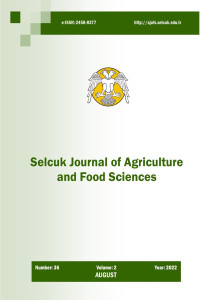Öz
Parametric utility model that predicts preferences of heterogeneous food consumers is flawed with issues of economic rationality. Using axiomatic preference indexes on food data from 459 household selected from a three-stage sampling procedure, the aim of the study was to check whether a finite set of price and demand observations made on household consumers in Delta state is
rationalizable by some form of utility maximization that is common across all households. The study found heterogeneity in food consumption behaviour with evidence against rationality in utility maximization for food expenditure choices at Afriat Efficiency Index (AEI) of unity, violating the GARP, SARP, SGARP, HARP and CM outside the optimum AEI of between 0.536 and 0.982 inclusive.
In three of the four food choice categories, households had below the Varian AEI threshold of 0.95. Particularly, household expenditure behavior in the State violated the GARP axiom of revealed preference at 0.018, 0.07, 0.104, 0.05, and 0.081 severity of violations for food in general, protein, carbohydrate, fats and oil, and fruits and vegetables sub-food categories respectively with 5-45% of
inconsistent household behaviour. At AEI of unity, 14.30%, 4.79%, 11.43% and 45.04% of the households failed the zero tolerance in the carbohydrate, protein, fats and oil, and fruits and vegetables categories respectively. Only about three to six revealed preferences were found necessary to fully rationalise observed food expenditure choices in the State. Thus, not only are households irrational
in utility maximization, there is unstable preference in food demand. Therefore, there is, in the aggregate, no exact one continuous, strictly increasing, piecewise strictly concave, skew-symmetric, and/or homothetic preference function that would completely rationalize households food consumption behaviour in Delta state.
Ayrıntılar
| Birincil Dil | İngilizce |
|---|---|
| Konular | Tarım Politikaları |
| Bölüm | Araştırma Makalesi |
| Yazarlar | |
| Yayımlanma Tarihi | 25 Aralık 2022 |
| Gönderilme Tarihi | 18 Mart 2022 |
| Yayımlandığı Sayı | Yıl 2022 Cilt: 36 Sayı: 3 |
Selcuk Journal of Agriculture and Food Sciences Creative Commons Atıf-GayriTicari 4.0 Uluslararası Lisansı (CC BY NC) ile lisanslanmıştır.


